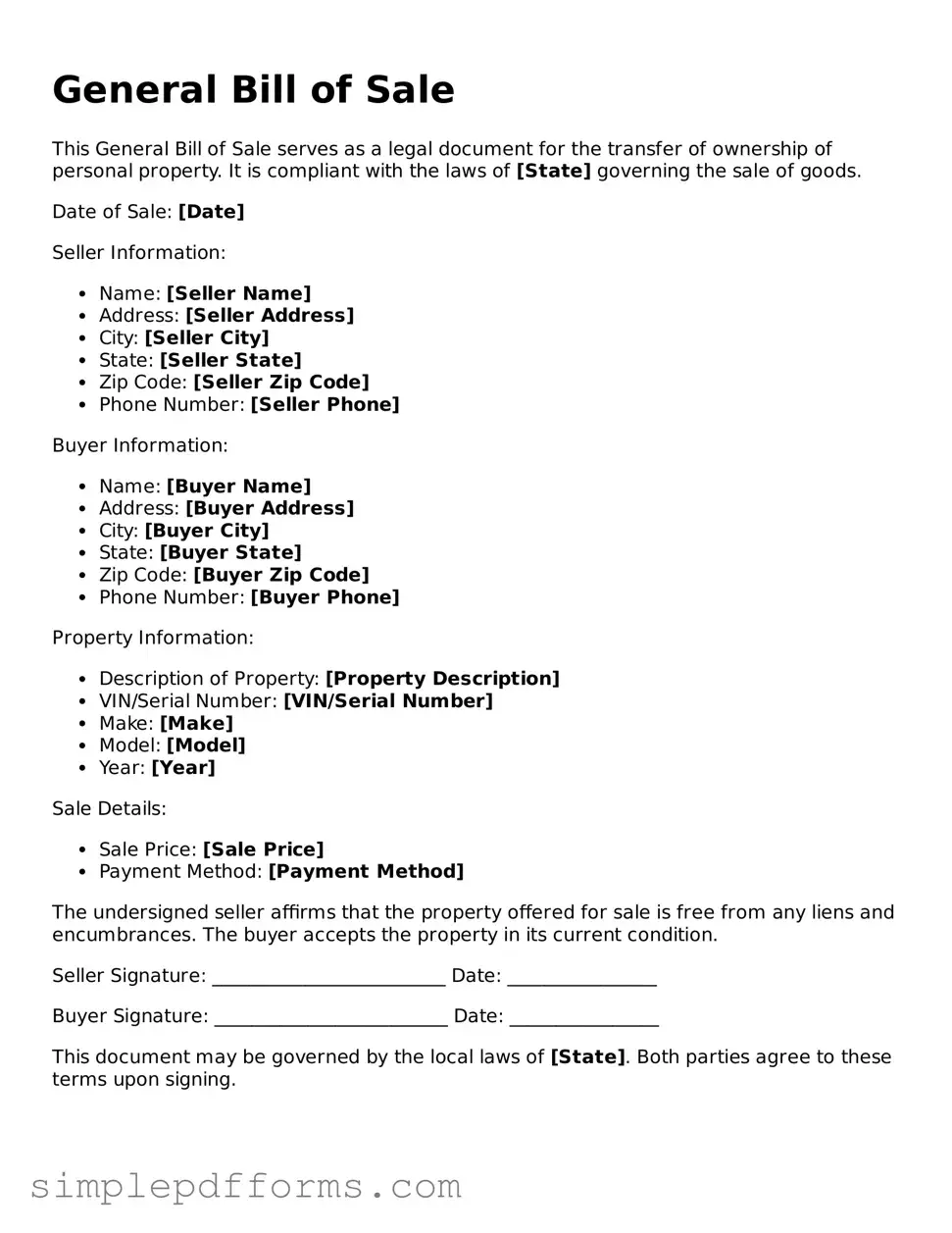General Bill of Sale
This General Bill of Sale serves as a legal document for the transfer of ownership of personal property. It is compliant with the laws of [State] governing the sale of goods.
Date of Sale: [Date]
Seller Information:
- Name: [Seller Name]
- Address: [Seller Address]
- City: [Seller City]
- State: [Seller State]
- Zip Code: [Seller Zip Code]
- Phone Number: [Seller Phone]
Buyer Information:
- Name: [Buyer Name]
- Address: [Buyer Address]
- City: [Buyer City]
- State: [Buyer State]
- Zip Code: [Buyer Zip Code]
- Phone Number: [Buyer Phone]
Property Information:
- Description of Property: [Property Description]
- VIN/Serial Number: [VIN/Serial Number]
- Make: [Make]
- Model: [Model]
- Year: [Year]
Sale Details:
- Sale Price: [Sale Price]
- Payment Method: [Payment Method]
The undersigned seller affirms that the property offered for sale is free from any liens and encumbrances. The buyer accepts the property in its current condition.
Seller Signature: _________________________ Date: ________________
Buyer Signature: _________________________ Date: ________________
This document may be governed by the local laws of [State]. Both parties agree to these terms upon signing.
